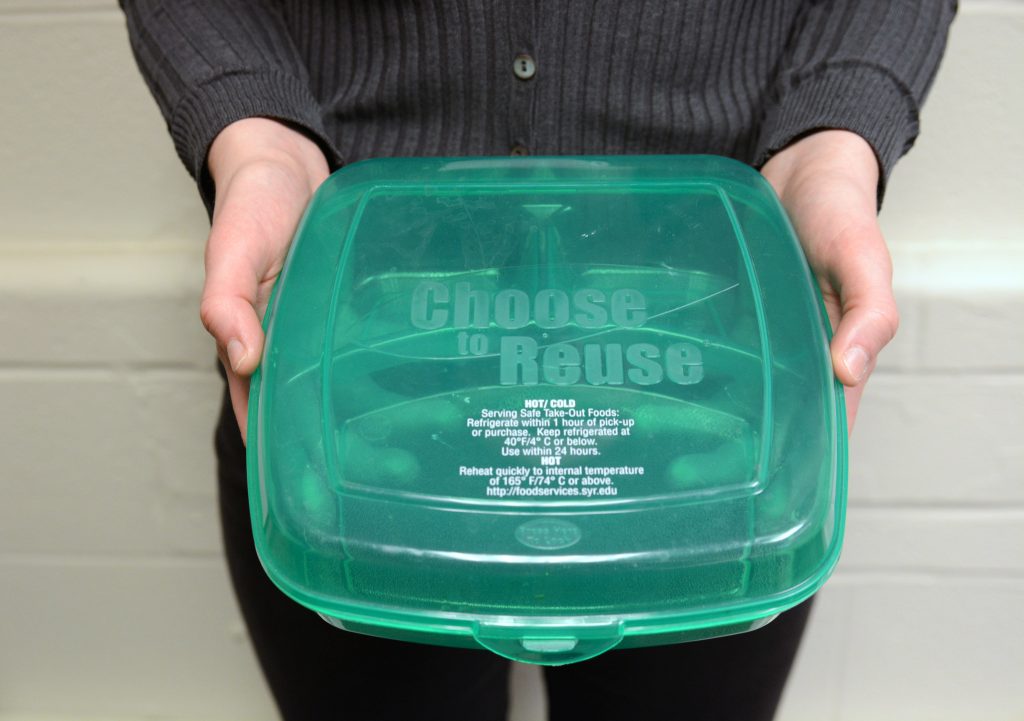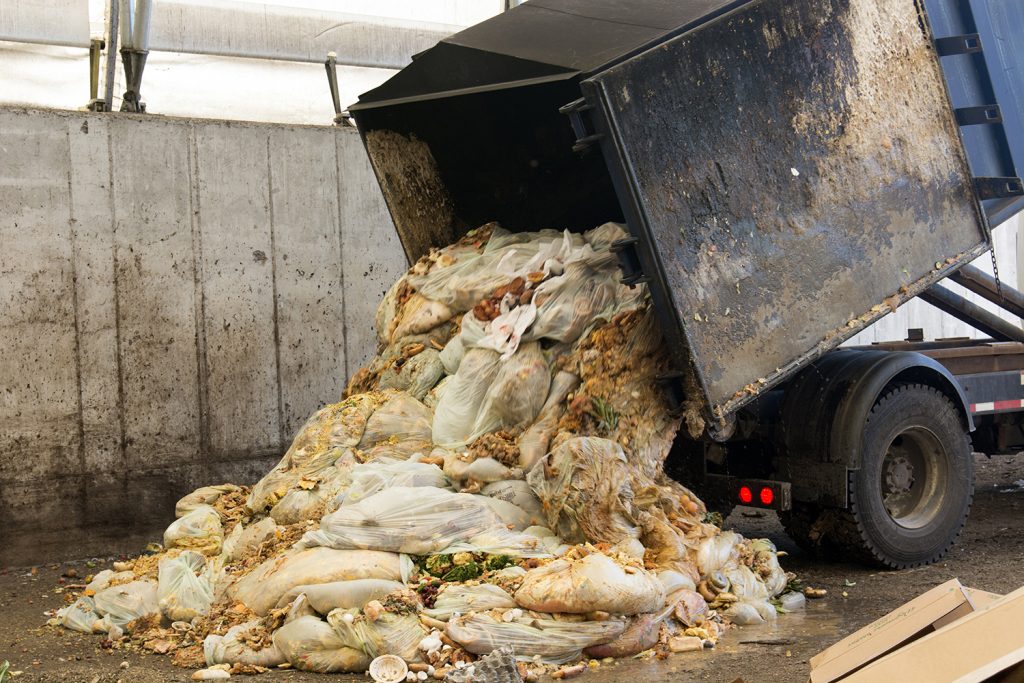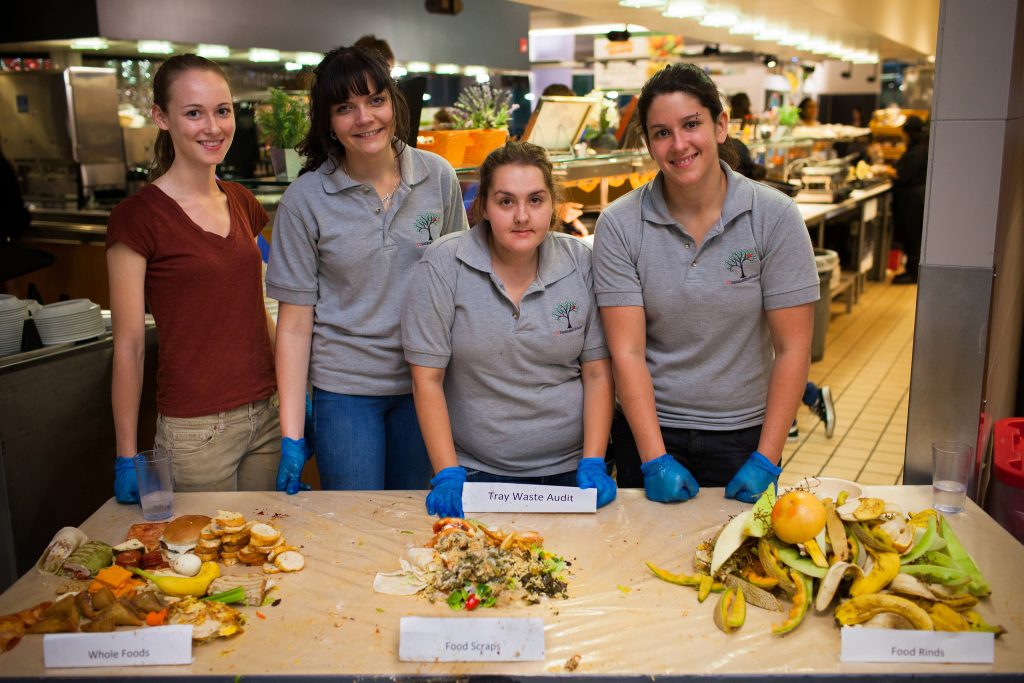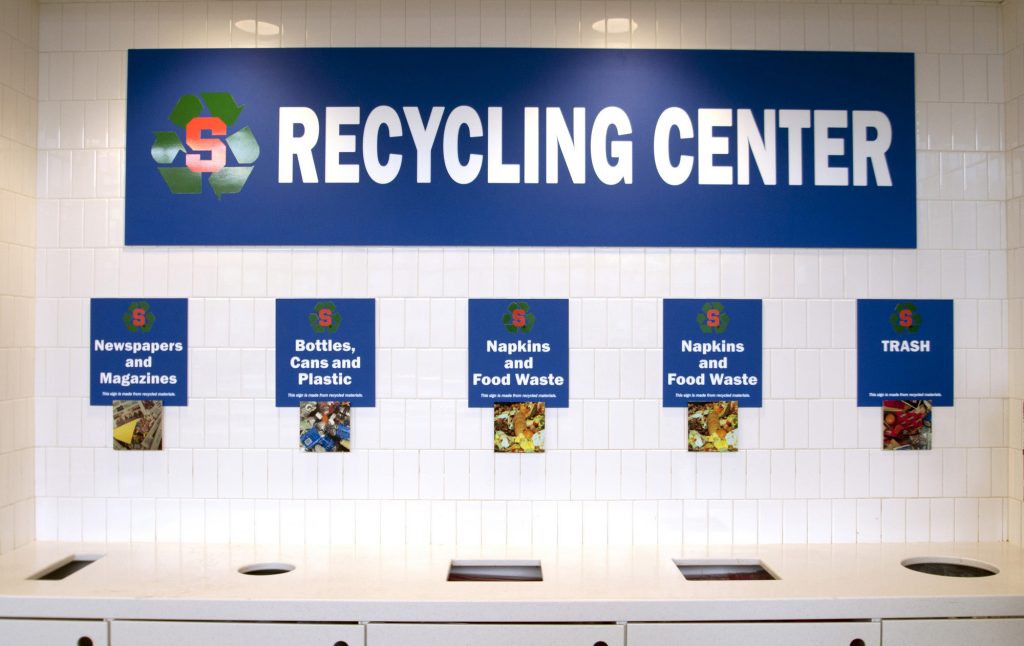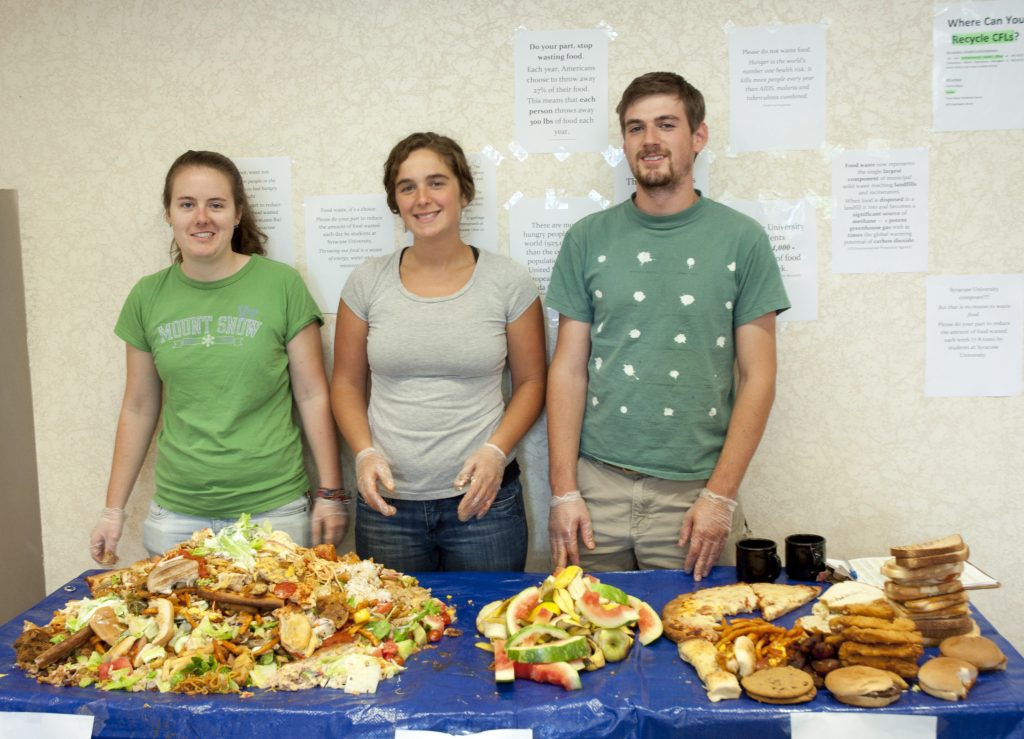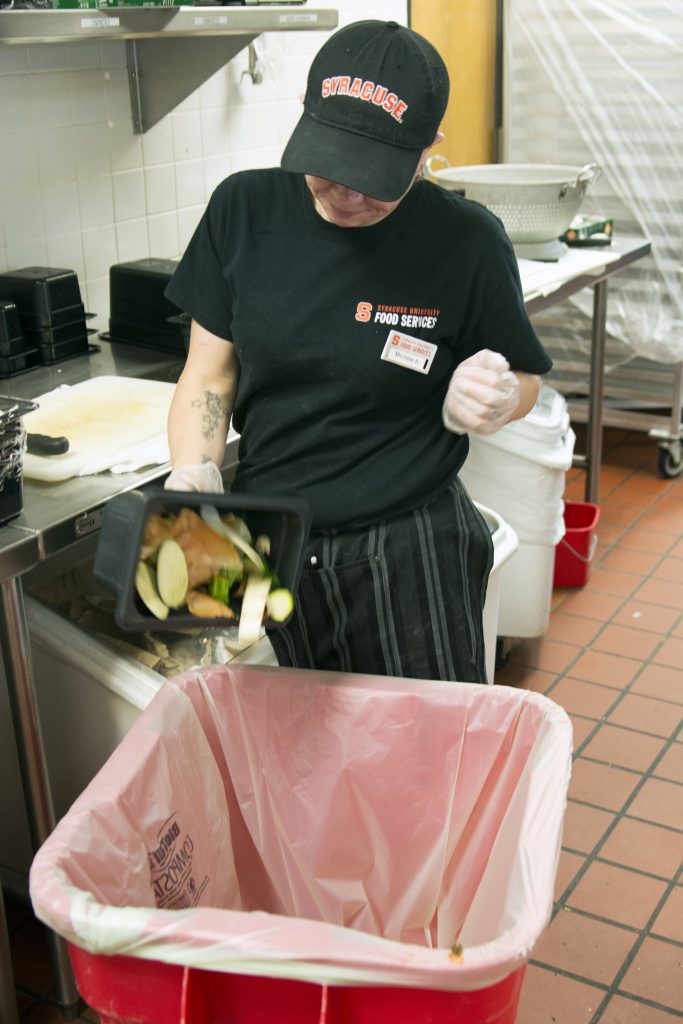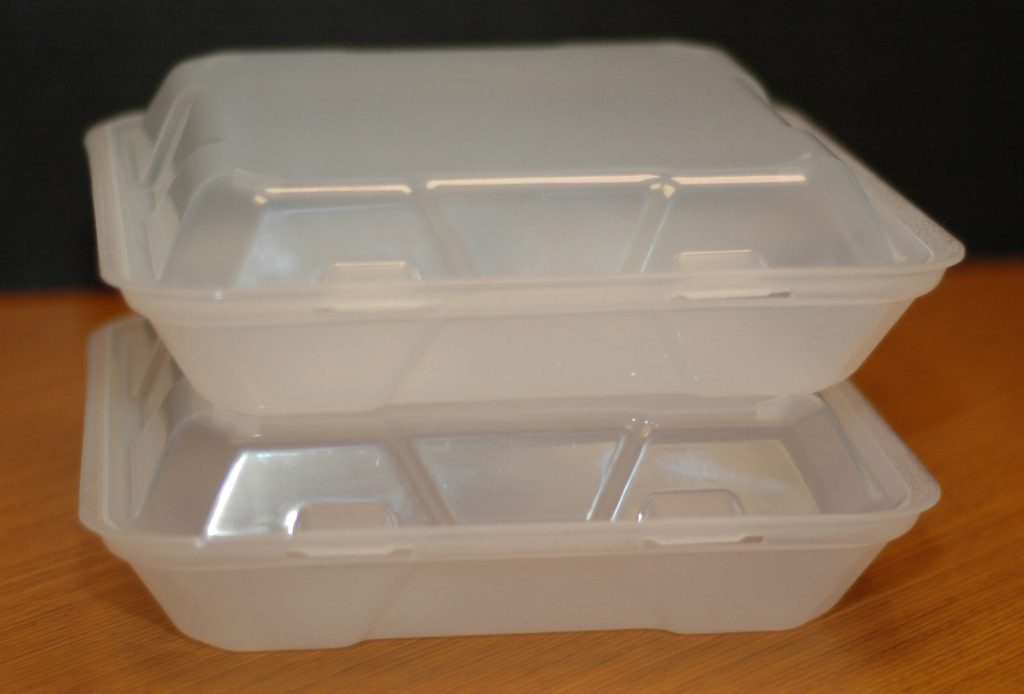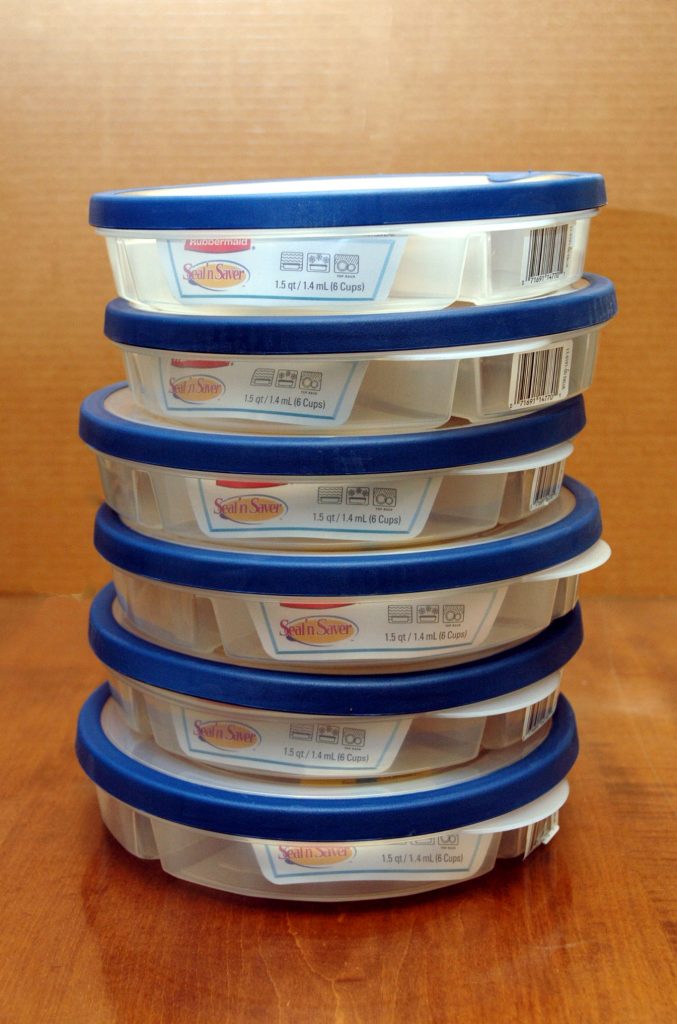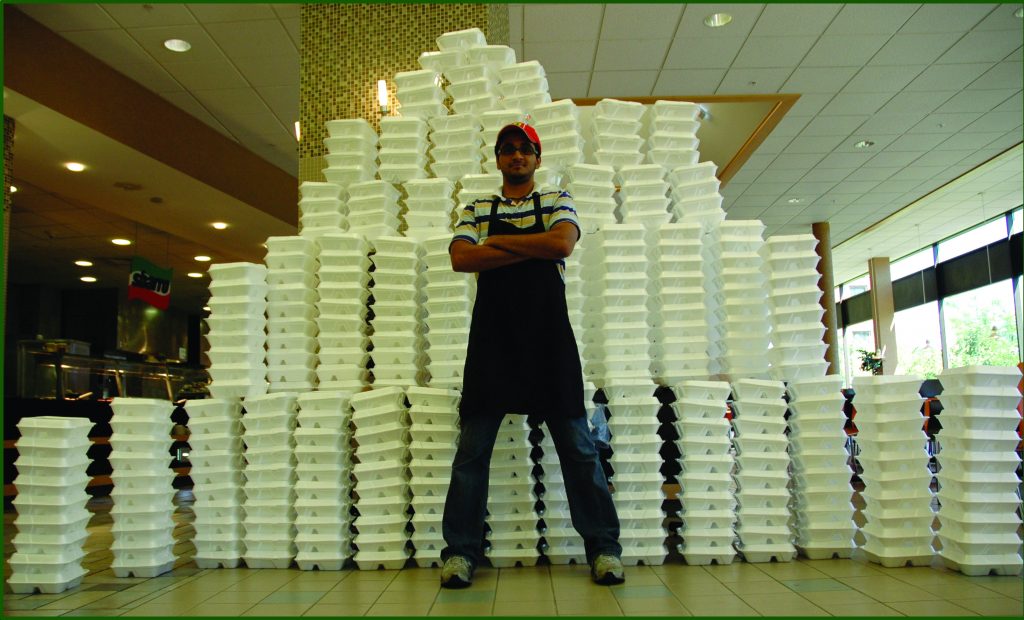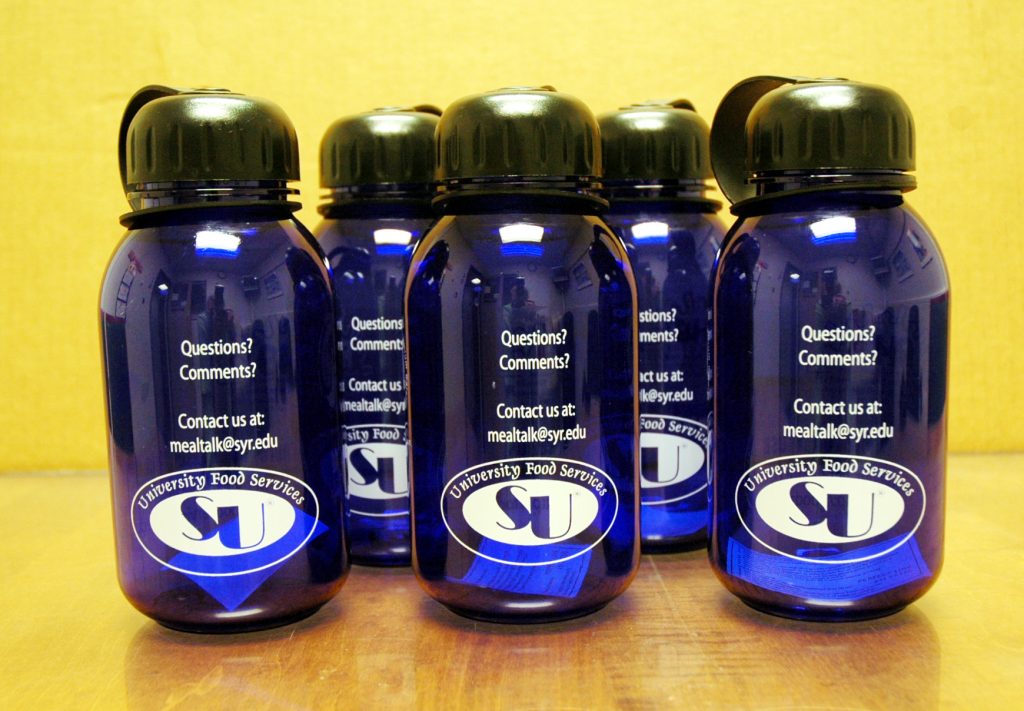Timeline Link
Reusable to go containers are reintroduced in the dining centers when covid packaging restrictions are lifted.
The Food Recovery Network began collecting from all five dining centers and Schine Dining. Donations are now delivered to seven charities. The composting program has grown substantially. Over 700 tons of pre- and post- consumer waste was composted 2017 – 2018.
The Food Recovery Network was launched at SU/ESF. Eight hundred pounds of food was donated to two local charities.
Trayless dining began in Graham and Shaw. Over 562 tons of waste materials was composted in 2014.
Trayless dining began in Sadler Dining. Over 315 tons of waste was composted in 2013.
Trayless dining began in Ernie Davis. Significant waste reduction was realized due to washing fewer items. Recycling Centers were installed in all dining centers so students could participate in our composting program by disposing of their food waste.
Sustainability Division began performing food waste audits in the dining centers to see how much food students were throwing away.
Food Services began composting pre-consumer waste from food preparation. Composting with OCRRA began. Over 74 tons of material was composted this year.
To go containers were upgraded so Food Services was able to efficiently wash and sanitize containers for students.
Mug Club started. Cafe customers can purchase a reusable mug to fill up on hot beverages while enjoying a discount for being sustainable. Free fill-up Friday is one of the Mug Club benefits.
Over 50,000 meals to go were taken annually. Styrofoam doesn’t compost, it just takes up space in landfills. Food Services started using reusable containers in Brockway Dining to begin eliminating waste.
Food Services experimented with trayless dining. Diners were alerted ahead of time that the trays would be taken away for one meal. Trayless dining was successful saving water used to wash the trays.
Students on the meal plan were offered a reusable bottle to take their beverage from the soda fountain.
Canned beverages were offered with the meal to go. Approximately 4200 cans of soda and juice were used weekly.
Paper bags were replaced with styrofoam containers to allow more choices for to go meals.
Students’ busy lifestyles created a need for a meal to go option. Dining center employees made simple meals for students to take in a paper bag.

